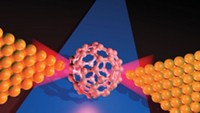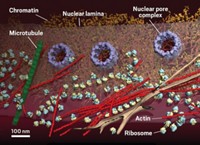Advertisement
Grab your lab coat. Let's get started
Welcome!
Welcome!
Create an account below to get 6 C&EN articles per month, receive newsletters and more - all free.
It seems this is your first time logging in online. Please enter the following information to continue.
As an ACS member you automatically get access to this site. All we need is few more details to create your reading experience.
Not you? Sign in with a different account.
Not you? Sign in with a different account.
ERROR 1
ERROR 1
ERROR 2
ERROR 2
ERROR 2
ERROR 2
ERROR 2
Password and Confirm password must match.
If you have an ACS member number, please enter it here so we can link this account to your membership. (optional)
ERROR 2
ACS values your privacy. By submitting your information, you are gaining access to C&EN and subscribing to our weekly newsletter. We use the information you provide to make your reading experience better, and we will never sell your data to third party members.
Analytical Chemistry
EPR Sizes Up Histones
Electron paramagnetic resonance spin-labeling technique allows researchers to measure the dimensions of a key protein complex
by Amanda Yarnell
January 26, 2009
| A version of this story appeared in
Volume 87, Issue 4

Using an electron paramagnetic resonance spin-labeling technique, researchers in the U.K. have ma9naged to take measurements of histone proteins (J. Am. Chem. Soc., DOI: 10.1021/ja807918f). Complexes of histones form the many spools around which eukaryotic cells wind their DNA for packing and control purposes. David G. Norman of the University of Dundee, in Scotland, and coworkers measured distances spanning the spools by using an EPR technique known as PELDOR, or pulsed electron double resonance. The method permits measurement of distances between nitroxide spin-label pairs installed at various places on the histone spool. Ranging from 59 to 70 Å, the distances Norman’s team measured are among the longest PELDOR measurements ever made on a biological system. Crystallography has yielded static pictures of histone spools with and without DNA, but PELDOR measurements could be used to reveal how DNA-threaded histone spools are assembled and accessed by other cell components, Norman says. More generally, the work demonstrates that PELDOR is a “very powerful technique to characterize structure and functional changes in biomacromolecular complexes,” says Olav Schiemann, an EPR expert at the University of St. Andrews, in Scotland.





Join the conversation
Contact the reporter
Submit a Letter to the Editor for publication
Engage with us on Twitter